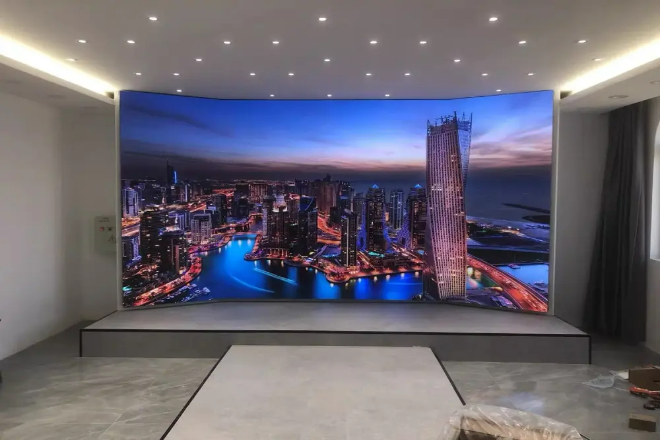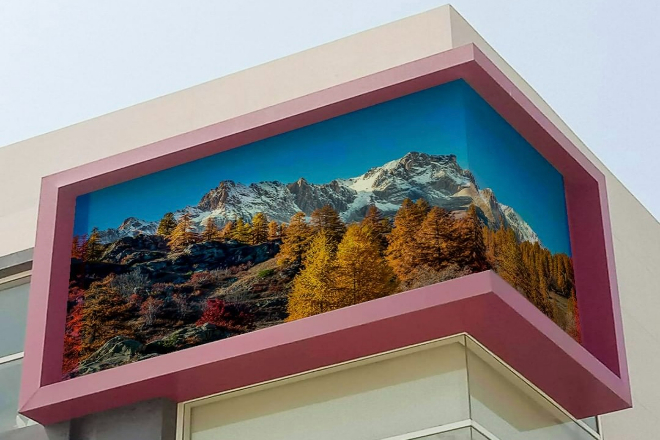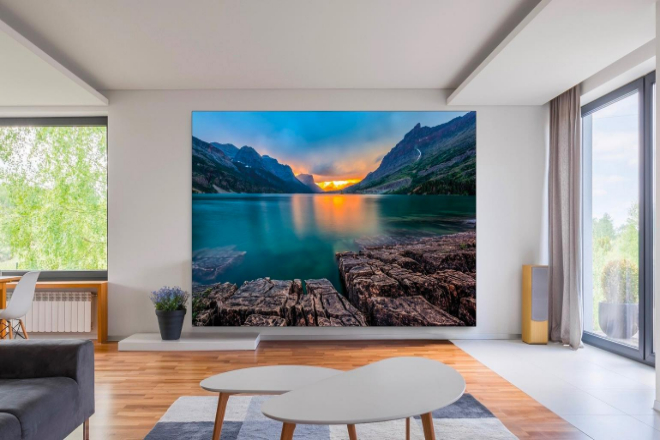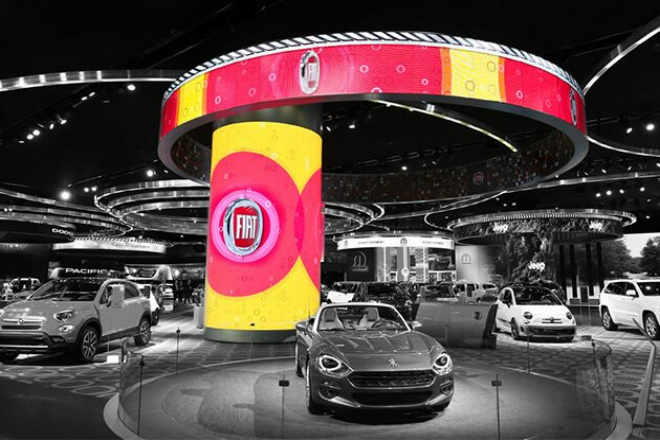介绍
1、LED显示屏的稳定性怎么样?
LED显示屏的稳定性,说白了就是它在制作完成后,在长时间使用或者面对各种环境变化的时候,能否保持其亮丽清晰的显示效果,而不是动不动就出问题。下面我们就来详细说说这个稳定性到底意味着什么。
首先,这取决于所用的材料。 LED灯珠、驱动芯片、电源等是显示屏的“心脏”和“血管”,必须选择质量好的。
就像我们买手机,一定要选择口碑好、信誉好的品牌,这样才能放心使用,这些材料也要经过很好的测试,确保能够经得起时间的考验。
下面我们来谈谈它的系统控制方案。 这就像我们的大脑,必须聪明灵活,显示屏必须有一个“备用大脑”,这样任何一个部件出现问题,它就能立即接管工作,确保显示不受影响。
还必须有一个“监控系统”,实时监控显示屏的状态。如果温度或湿度过高,它能够自动调节。如果出现问题,它还能立即发出警报。
老化测试也是不可缺少的。 就像我们的新车需要磨合一样,显示屏也需要经过一段时间的“磨合期”,看看它工作时间长了会不会有什么变化。
制造商将记录这次测试并告诉我们显示屏在“磨合期”内的表现如何。
使用寿命和可靠性也是稳定性的重要方面。 好的LED显示屏可以用好几年都不会出问题,显示效果依然跟新的一样,我们买显示屏肯定希望它能用很久,不容易坏。
环境适应能力也很重要。 显示屏必须防尘防水,能够应对各种天气,无论放在室内还是室外,夏天酷热难耐,冬天瑟瑟发抖,显示屏必须稳定工作。
2、LED显示屏的稳定性有多重要?

LED显示屏稳定性的重要性真是没的说,它直接关系到显示屏的寿命、性能、用户体验,下面我们来详细说说。
首先,我们来谈谈生活。 LED显示屏不是用一天两天就能扔掉的东西,它要陪伴我们很长一段时间,如果稳定性不好,时不时就会出现一些问题,寿命肯定会大大减少。
想想看,本来可以用好几年的显示屏,因为稳定性差,用不到一年就报废了,那该是多么痛苦啊!所以,好的稳定性,才能让显示屏寿命更长,我们用得更安心。
让我们来谈谈性能。 LED显示屏的性能,就是它的“看家本领”。显示效果好、亮度高、色彩鲜艳,是我们选择显示屏的首要条件。但如果稳定性不好,这些性能就毫无用处。
试想一下,显示屏一会儿亮一会儿暗,颜色时常变化,看起来是多么别扭啊。因此,良好的稳定性才能保证性能的稳定,才能让我们看到最佳的显示效果。
最后我们来谈谈用户体验。 我们使用LED显示屏,是为了方便、舒适。假设显示屏不稳定,老是出问题,用起来该有多烦人?
要么维修,要么更换,那又如何享受显示屏带来的乐趣呢?所以,只有稳定性好,才能有好的用户体验,才能开心安全的使用。
综上所述,LED显示屏的稳定性至关重要,它不仅影响显示屏的寿命和性能,还直接影响我们的用户体验。因此,我们在选择显示屏的时候,一定要擦亮眼睛,认真选择稳定性好的产品。
方法一:初步观察和外观检查
1). 整体观察
1.1).看一下LED显示屏正常工作时是什么样子的:
让我们打开LED显示屏,点亮它,仔细看看。亮度够亮吗?色彩鲜艳准确吗?
画面流畅吗?这些都是我们一眼就能看出来的。一块好的显示屏,一定具备这些方面,让人一眼就觉得舒服。
1.2). 注意是否有错误:
观察的时候,一定要细心。比如,LED显示屏是不是像闪一下似的?这可能是电路不稳定,或者灯珠有问题。还有,有没有哪个灯珠不亮,像个小黑点?
这可能是因为灯珠坏了,或者焊接不好。另外,亮度是不是有的地方亮,有的地方暗,或者颜色看起来不对?这些都是需要赶紧记录下来的问题。
2).外观细节检查
2.1). 车架是否稳固,有无变形、损坏:
我们必须触摸LED显示屏的框架,看看它是否稳定。如果框架摇晃、变形或损坏,显示屏就会很危险。也许有一天它会掉下来砸到人,或者自行散架。
2.2).连接线是否良好,有无断线、松动:
连接线是LED显示屏的“生命线”,我们必须仔细检查连接线是否有断裂或者松动的情况。如果连接线出现问题,信号就无法很好地传输,显示屏可能会出现各种问题。
2.3).表面是否干净,有无污垢或划痕:
最后,我们要看看LED显示屏的表面。如果上面有污垢或者划痕,看起来会不舒服。我们要用干净的布擦拭,才能让显示屏看起来光亮如新。
方法二:功能测试

1). 亮度 调整测试
- 方法:
拿起遥控器或者走到控制面板前,轻轻调节LED显示屏的亮度。就像调节家里的灯一样,看看亮度是一点一点变亮或变暗,还是突然跳变。
- 观察:
观察亮度变化是否平滑,有没有突然变亮或变暗的感觉,就像看电影时突然打开车灯一样。如果有跳跃或不稳定的情况,就要留意了。
2). 显色性能测试
- 方法:
找一些色彩丰富的图片或视频播放,就像看相册或电影一样。
- 观察:
看看颜色是否鲜艳准确,就像看真花一样。是否有任何颜色看起来不对劲,比如红色变粉,蓝色变绿?偏色或色彩失真是大忌!
3). 屏幕 刷新率 测试
- 方法:
找一些快速移动的图片或视频来播放,例如赛车或动作片。
- 观察:
集中注意力,看看画面是否像实际画面一样流畅。有没有像看慢动作回放一样的拖影感,或者画面突然卡住?拖影或卡顿是观看电影的大敌!
4).输入信号测试
- 方法:
把家里的电脑、DVD播放器或其他设备拿出来,逐一连接到显示器上。
- 观察:
检查显示器是否“接受所有”这些输入设备,以及它是否能够快速响应。有些设备连接后没有响应,或者响应很慢,这不太好。
方法三:环境适应性检查
1). 温度测试
- 方法:
这个测试挺有意思的,需要把LED显示屏放在不同的温度环境中“体验一下”。比如,先在室内室温下工作一段时间,看看它的表现;然后,再把它搬到更热或更冷的地方,比如夏天的阳光下,冬天的室外,观察它的工作状态。
- 观察:
关键在于观察显示器在不同温度下是否能稳定工作,亮度是否变暗、颜色是否失真,或者是否直接熄灭。如果显示器在某个温度下“罢工”,就得小心了。
2). 湿度测试
- 方法:
这个测试一定要在湿度比较大的环境下进行,比如雨季或者特别潮湿的地方,你可以把LED显示屏放在这样的环境中,仔细观察。
- 观察:
需要看看显示器上是否有雾气或者水凝,这些都会影响显示效果,如果显示器起雾或者有水珠滴落,就要赶紧处理了。
3).防尘防水测试(仅适用于户外LED显示屏)
- 方法:
这个测试主要针对户外LED显示屏。可以找一个恶劣的天气,比如大雨或者强风,把显示屏放在户外“体验”。当然,为了安全起见,最好使用专业的防尘防水测试设备来模拟这些恶劣的天气条件。
- 观察:
需要检查显示器在恶劣天气条件下是否还能正常工作,是否有水或灰尘进入。如果显示器被雨水淋湿或进入灰尘,则必须立即维修或更换。
方法四:长期观察和维护

1).定期检查
- 建立体系:
首先,要给LED显示屏制定一个“体检表”,也就是定期检查制度。比如每周、每月、每季度检查一次,看看显示屏的运行情况。
- 观察记录:
检查时务必细心。检查LED显示屏的亮度和色彩是否与新品一样,屏幕是否闪烁或卡顿。此外,别忘了检查连接线、框架等“小部件”是否完好无损。
发现问题就立即记下来,不要等小问题变成大问题。
2). 清洁保养
- 表面清洁:
LED显示屏是我们的门面,所以必须保持清洁。定期用软布或专业清洁剂擦拭表面,去除灰尘和污渍,让显示屏始终光亮如新。
- 框架维护:
边框也是LED显示屏的一部分,千万不要忽视它。检查边框是否变形或损坏,并及时维修或更换。此外,边框上的螺丝一定要拧紧,不要松动。
3). 记录与分析
- 使用记录:
每次检查或维修LED显示屏时,一定要记录情况。比如,什么时候检查的,发现了什么问题,是怎么处理的?这些记录就是宝贵的“病历”。如果以后显示屏再出现问题,就能快速找到原因和解决办法。
- 修复历史分析:
过一段时间之后,你要通过查看这些记录来分析显示屏可能出现的问题和原因。
比如某个部件是不是特别容易坏,或者使用环境是不是太恶劣了?这样就可以提前采取措施,预防问题的发生。
结论
通过本文的介绍,我们了解到用户自行检查LED显示屏稳定性的重要性以及具体方法。
从初步观察、外观检查到功能测试、环境适应性检查,再到长期的观察和维护,每一步都是保证显示屏正常运行、延长使用寿命的关键。
最后,如果您想了解更多关于LED显示屏的知识, 请与我们联系。

